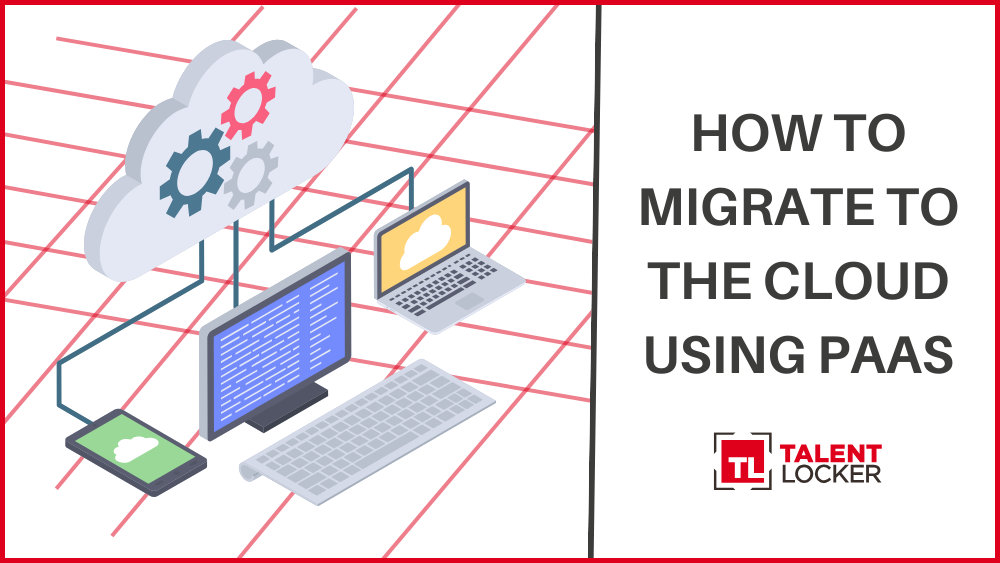
Understanding how to migrate to the cloud using PaaS is important for any organisation looking to optimise its system functionality.
Platform as a Service (PaaS) is a cloud computing model that provides a complete platform for developing, running, and managing applications. PaaS providers offer a variety of services, including operating systems, programming languages, databases, and development tools. This allows developers to focus on building their applications without having to worry about managing the underlying infrastructure.
PaaS can be a good option for businesses that are looking to migrate to the cloud. It can help to reduce the cost and complexity of migration, and it can also provide a number of other benefits, such as improved scalability and security.
Benefits of using PaaS for cloud migration
There are a number of benefits to using PaaS for cloud migration, including:
-
Reduced cost and complexity:
PaaS can help to reduce the cost and complexity of cloud migration by providing a complete platform for developing, running, and managing applications. This eliminates the need to purchase and maintain hardware and software, and it also simplifies the process of deploying and managing applications. -
Improved scalability and security:
PaaS providers typically offer a high level of scalability and security. This can be beneficial for businesses that need to be able to scale their applications up or down quickly and easily, and that need to protect their applications from security threats. -
Faster time to market:
PaaS can help businesses to get their applications to market faster by providing a pre-configured platform that is ready to go. This can eliminate the need to spend time and resources on setting up and managing the underlying infrastructure.
How to choose the right PaaS provider
There are a number of different PaaS providers available, so it's important to choose one that offers the services and features that you need. Consider factors such as the programming languages and frameworks that you use, the databases that you need, and your scalability and security requirements.
Some of the most popular PaaS providers include:
- Google App Engine
- Heroku
- AWS Elastic Beanstalk
- Azure App Service
- IBM Cloud Foundry
How to assess your applications for cloud migration
Before you start migrating your applications to PaaS, it's important to assess them to determine which ones are good candidates for migration. Some applications may need to be refactored or redesigned to be compatible with PaaS.
Here are some factors to consider when assessing your applications for cloud migration:
Programming language and framework:
Make sure that the programming language and framework that your application is built on are supported by the PaaS provider that you choose.
Database:
Make sure that the database that your application uses is supported by the PaaS provider that you choose.
Scalability requirements:
Consider the scalability requirements of your application and choose a PaaS provider that can meet those needs.
Security requirements:
Consider the security requirements of your application and choose a PaaS provider that can meet those needs.
How to develop a migration plan
Once you've assessed your applications, you need to develop a migration plan. This plan should include a timeline, a budget, and a list of the steps that you need to take to migrate each application.
Here are some tips for developing a migration plan:
Start with the most important applications:
Prioritise the migration of your most important applications first. This will help to minimise the disruption to your business.
Break down the migration into smaller tasks:
Don't try to migrate all of your applications to PaaS at once. Break down the migration into smaller tasks and focus on migrating one application at a time. This will help to make the migration process more manageable and less disruptive.
Test your applications regularly:
After you've migrated your applications to PaaS, be sure to test them regularly to make sure that they are working properly. This is especially important if you are making changes to your applications or to the PaaS environment.
How to migrate your applications to PaaS
Once you have a migration plan, you can start migrating your applications to PaaS. Be sure to follow the documentation provided by your PaaS provider to ensure that the migration is successful.
Here are some general tips for migrating your applications to PaaS:
- Use a migration tool: There are a number of different migration tools available that can help you to automate the process of migrating your applications to PaaS. This can save you time and effort, and it can also help to reduce the risk of errors.
- Back up your applications: Before you start migrating your applications, be sure to back them up thoroughly. This will protect your data in case of any problems during the migration process.
- **Test your applications
By following these tips, you can migrate to the cloud using PaaS in a smooth and efficient manner.
...
Is your organisation migrating to the cloud? We have the talent in place to support your needs.
Recent Posts
